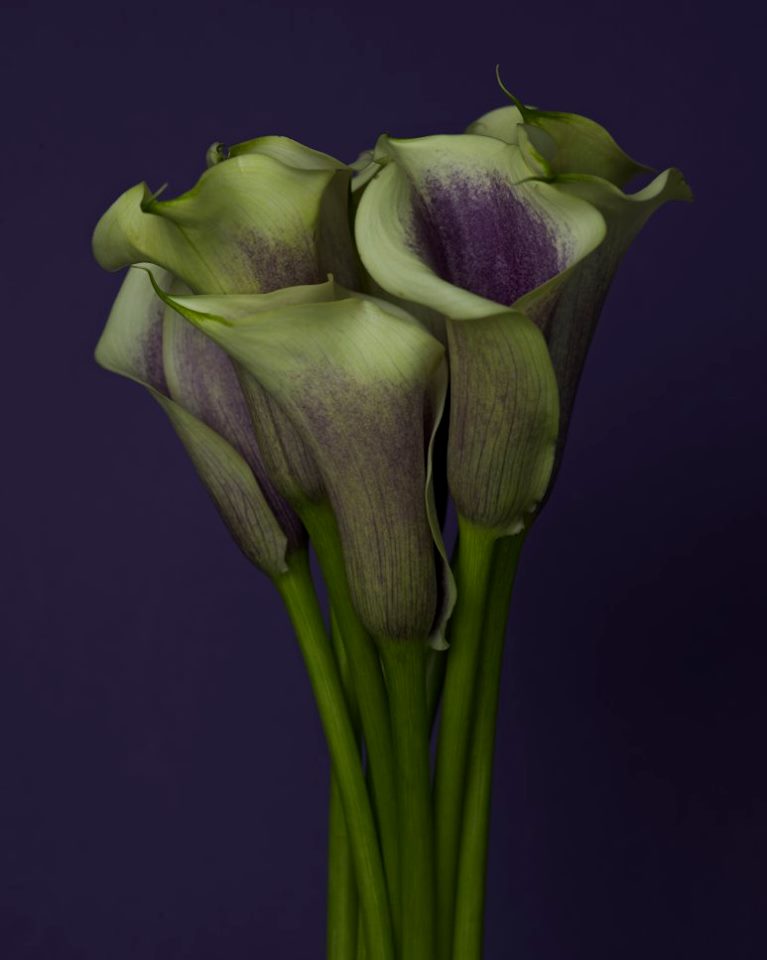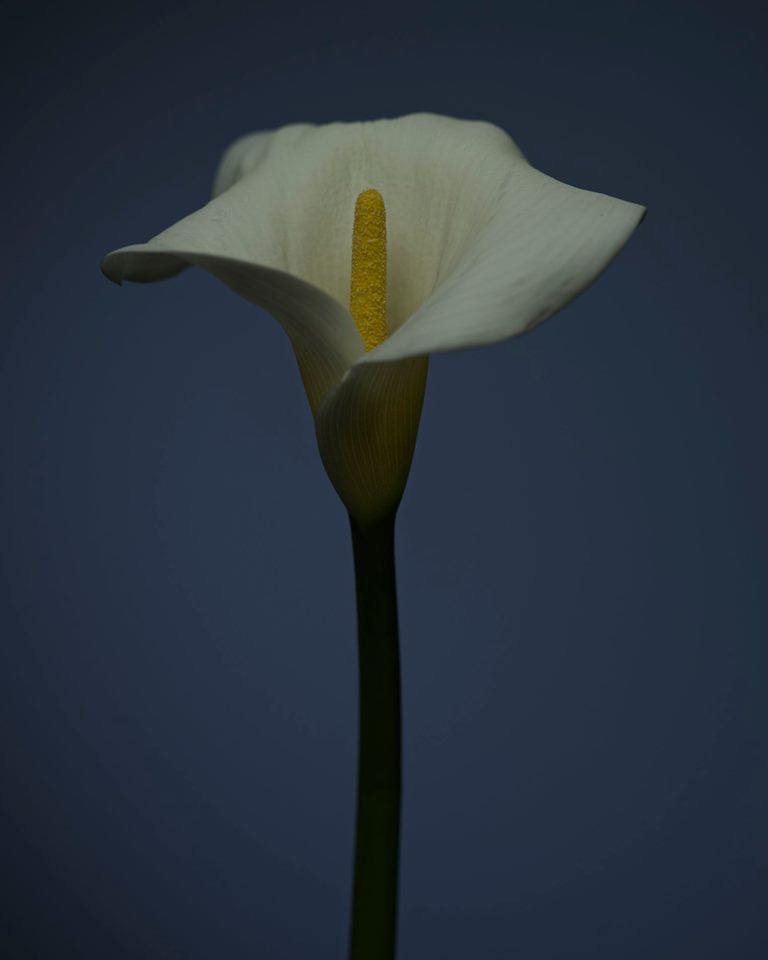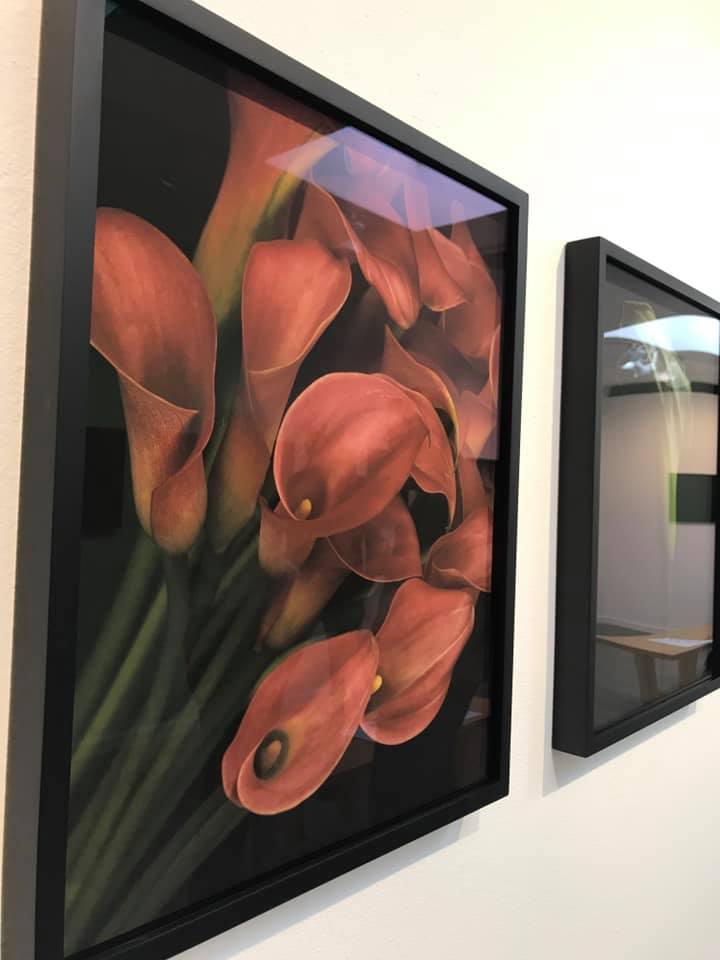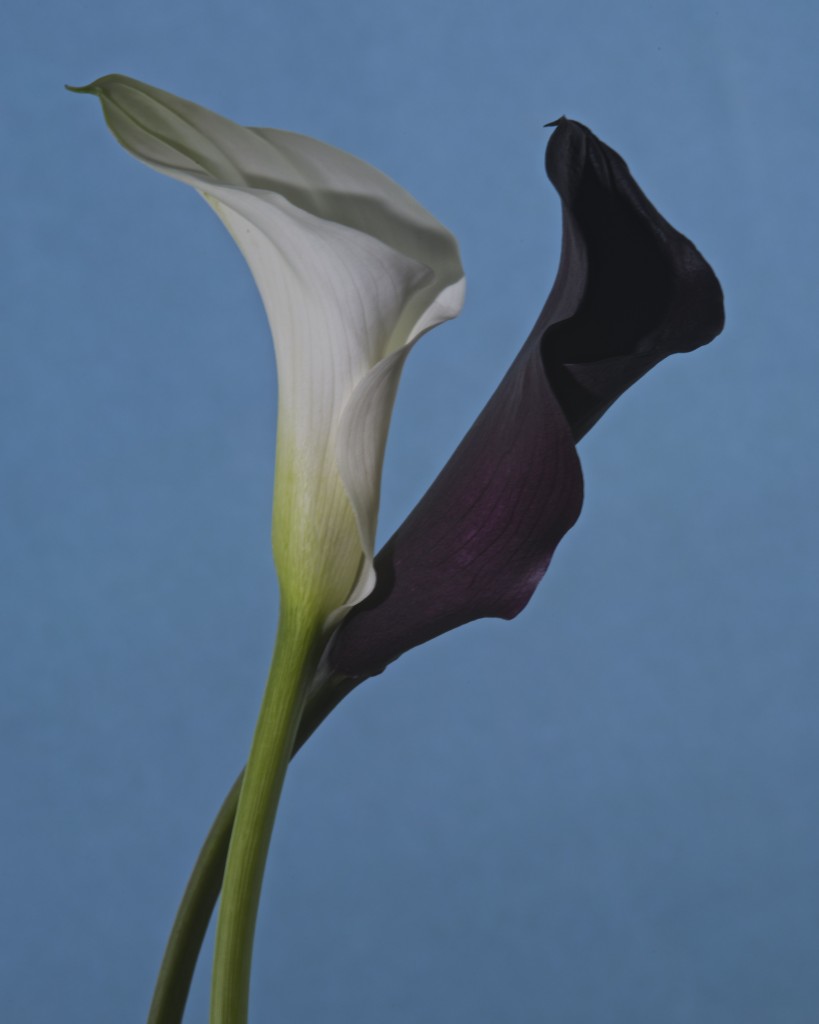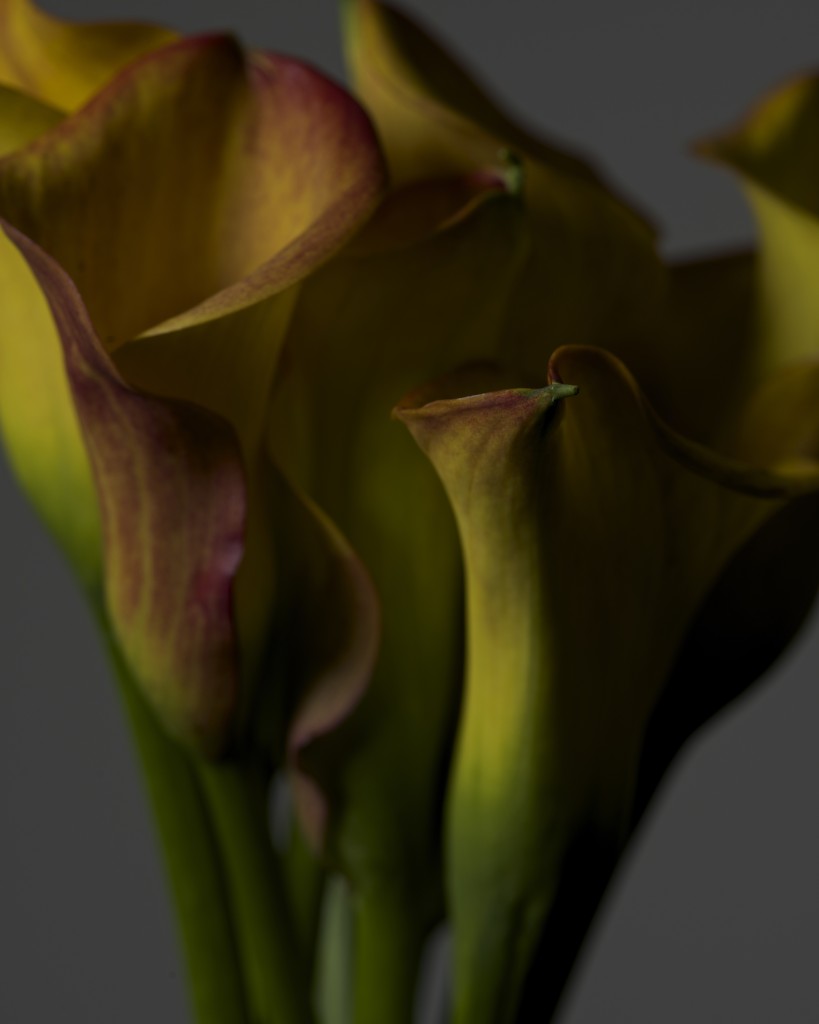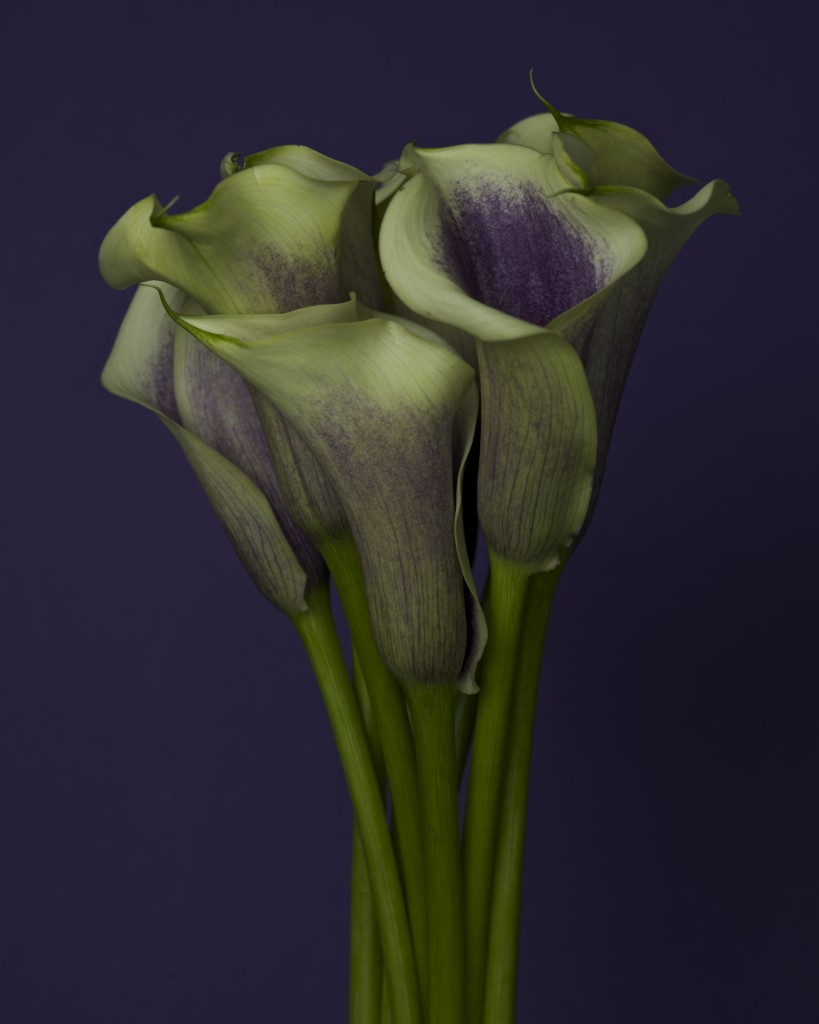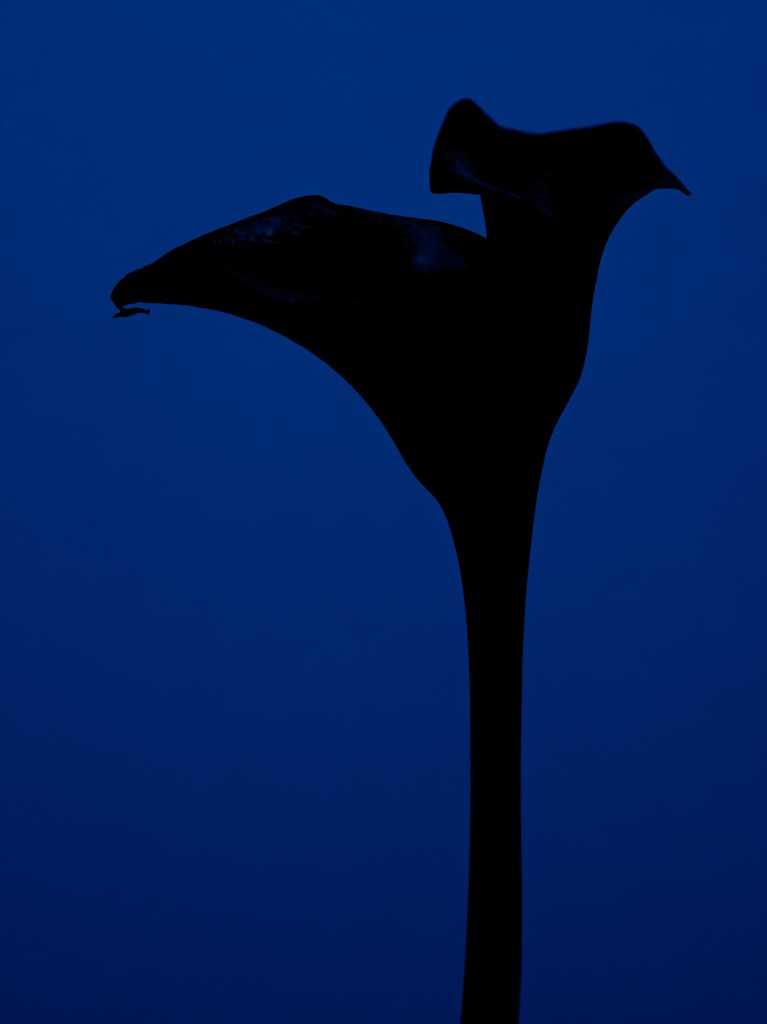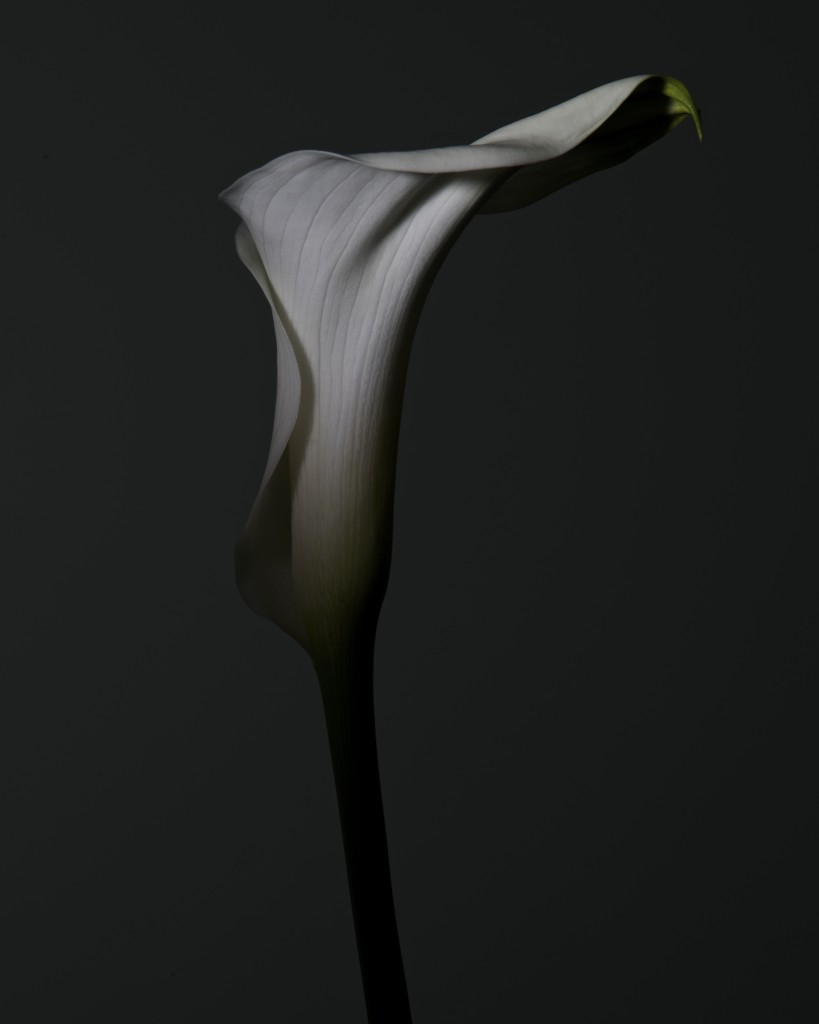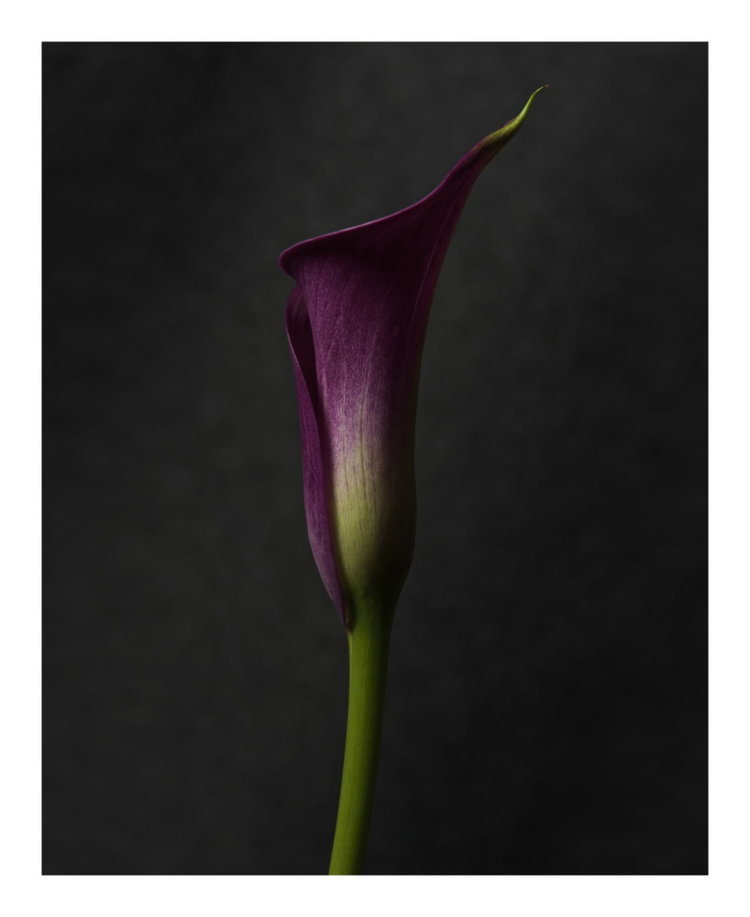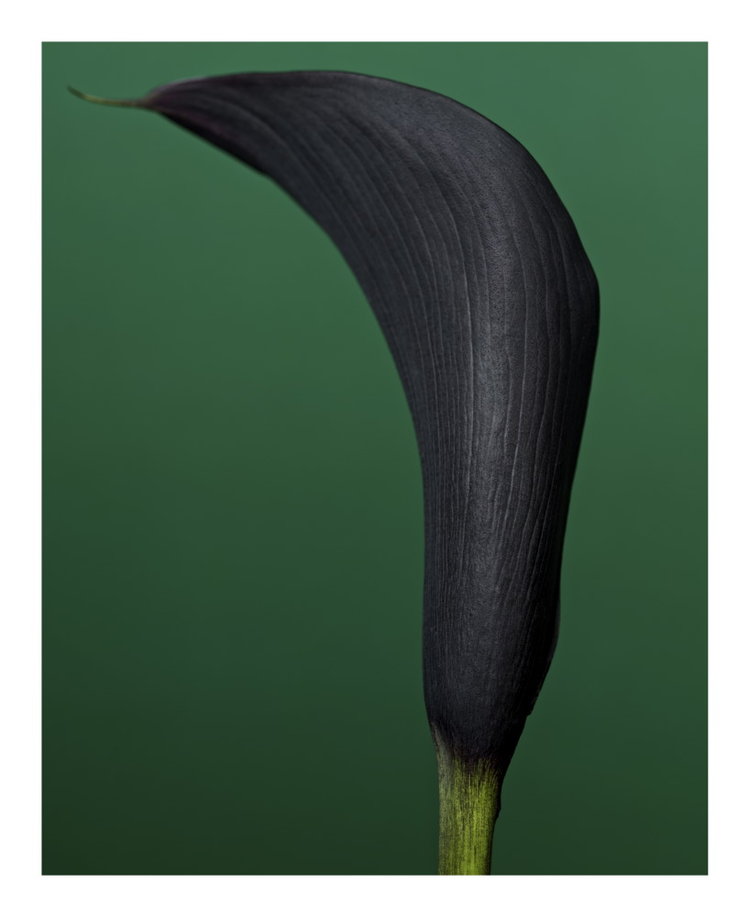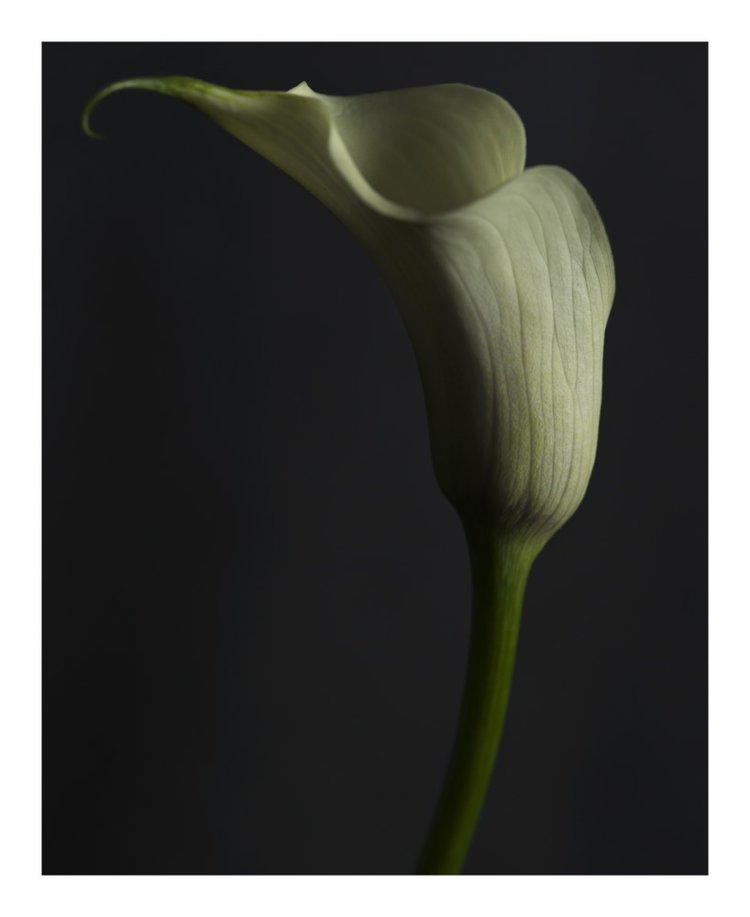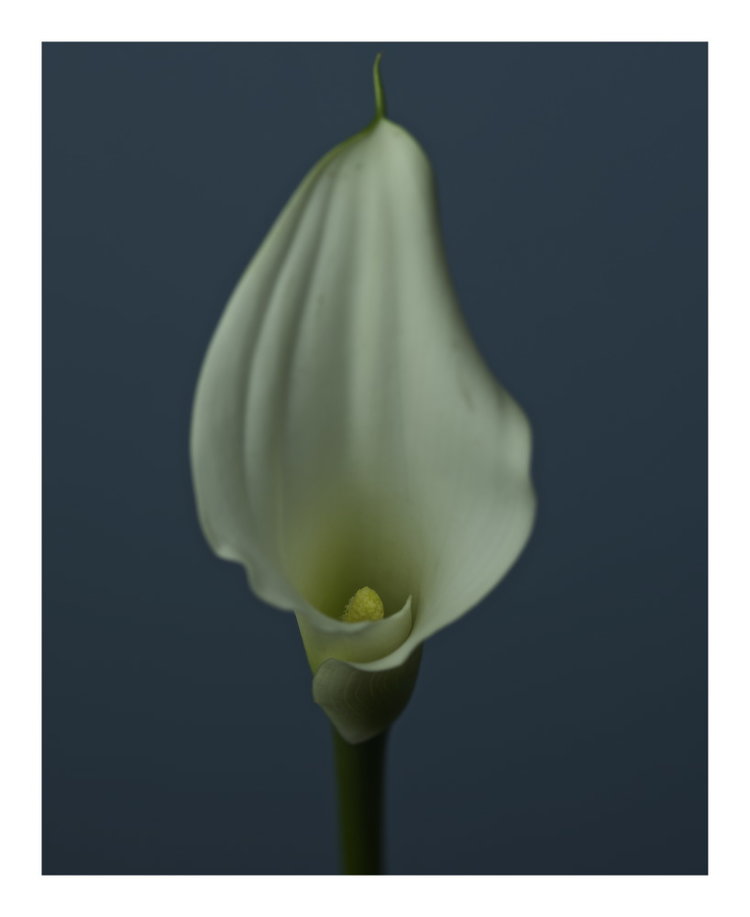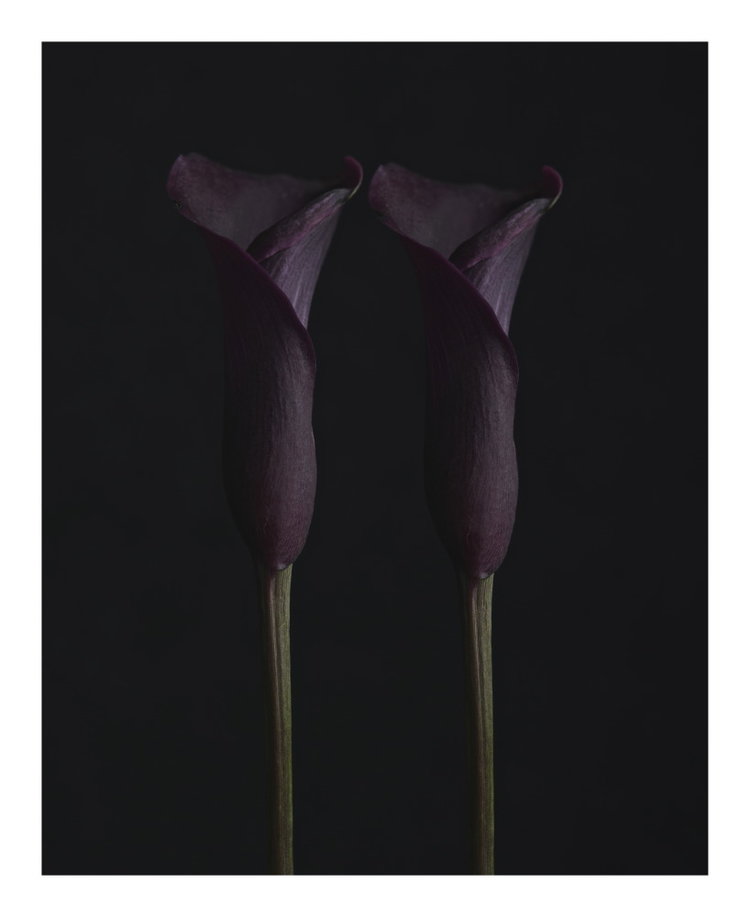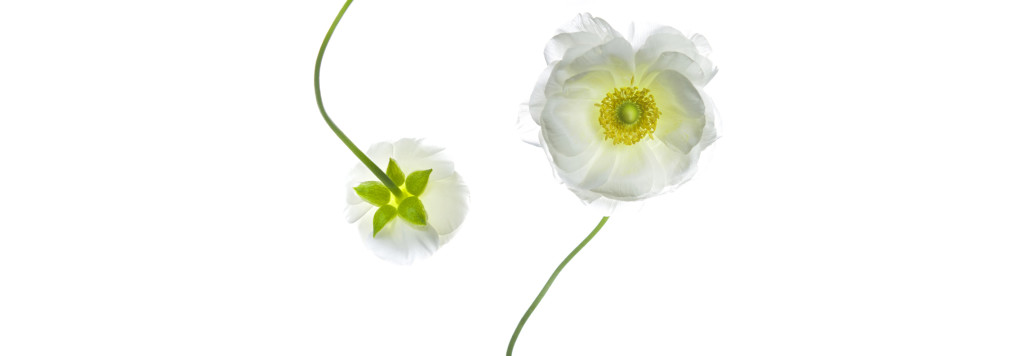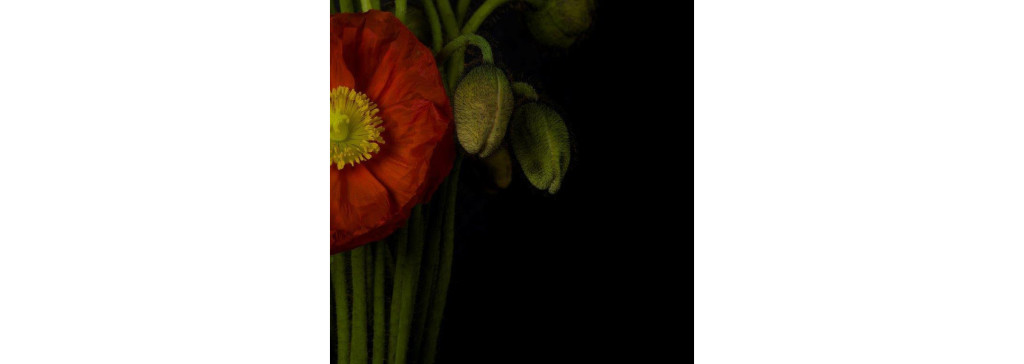Floral images are a blossoming thing for photographic artist Jeffrey Sklan. With Elegy, which he terms his last botatnical series, he is “paying tribute,” but perhaps his work always has, regardless of subject.
“The floral images in this series were the result of two discrete events, a decade or so apart. First, a few years ago, I wanted to do a project that would not require other people, in any capacity. Second, there was the ‘rediscovery’ of film negatives that had been processed but never printed,” Sklan remarks.
The negatives were taken immediately after a memorial service for Sklan’s mother in 2001.
“Everyone had gone and it was quiet in a way that is almost always preceded by great loss. There was a bunch of tulips in an art nouveau vase that I had given her, years before. They were both beautiful and lonely,” he relates. Restless and seeking an artistic and stylistic change, he found these negatives 13 years later; the result was an initial image titled “Beverly’s Tulips,” after the artist’s mother.
The Elegy series reflects both beauty and loss. The initial image “Lily for Orlando,” was “literally created as the crime scene from the Pulse Nightclub was playing out. A black lily on green background resulted. It was June, 2016 and there was no intention of it being anything but a one-off.”
But in July of 2016, 87 people were killed celebrating Bastille Day in Nice. “The enormity of it resulted in another image. And that was that – a project took form,” Sklan says.
Then a classmate of his daughter’s was murdered by a white supremacist in Portland.
“Things shifted, and rapidly, from that point. I had met a victim. The image created for this boy, whose name was Taliesin, was strong and nuanced. For the first time ever, I did a giclee print as a fundraiser to commemorate him and accumulate scholarship funds for his alma mater. The response was positive and humbling.”
Profits from the print sales were forwarded to Reed College in Taliesin’s name; a scholarhsip was created, and a handwritten note from the first recipient remains on the artist’s desk, as tangible proof that his work is powerful enough to make a difference.
“The exhibition is designed to be a traveling show. The prints are relatively small. Their sales are the sole source of funding for travel and exhibition costs. There are no sponsors to date. There is absolutely no profit motive for me. It has been its own reward, thus far,” Sklan asserts. “The message is simple: we are each, in our own way and according to our capacity, capable of effecting change.”
Sklan terms this work a labor of love. “When I was shooting it, ten hour shoots seemed like ten minutes. The process is straightforward and comports with my aesthetic of ‘nothing extra.’ One camera and one 30-year-old lens were used, in a small studio that was once my dining room.”
There’s a strong spiritual component to his work – not only the floral images here, but in earlier floral works; portraits of artists – a new series which he calls The Brush Off; and in other incarnations of his work, including an image of a lonely roadside restaurant abandoned in New Mexico, or in mixed-media collaborations that celebrate musical artists. That component comes from within: it is a ribbon of light, a moment of solitude, the sense of longing for connection – to life, to beauty, to being.
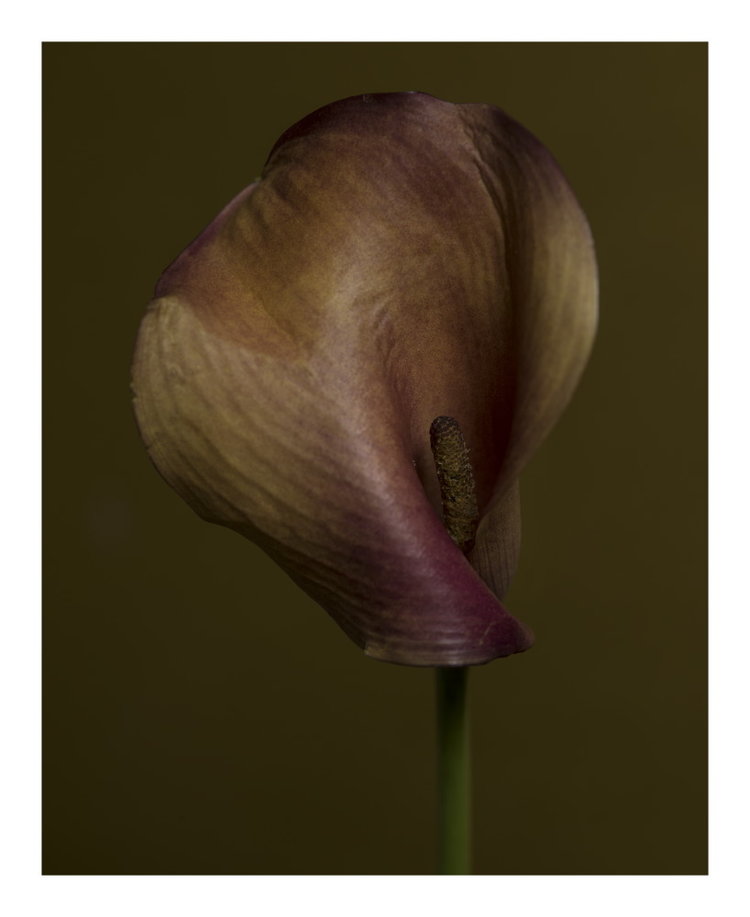
Sklan says “The most successful images reflect what I was feeling or intuiting in the moments surrounding the shutter’s release. Whether person or flower, capturing emotional content or portraying a sitter in such a way as to spark a visceral reaction is the intention. I am seeking to memorialize the essence of what is before me. This is a search for the spiritual.” He says that his eye rejects that which is coarse or crass, and is not distracted by “whatever lays on the surface. If you’re around me for any length of time, your truth will make itself known,” he attests.
His rich color palette originated with a fascination and admiration for artists such as Velasquez, Rembrandt, Titian, and Caravaggio. “My sense was that if I could ever take just one photograph that had those artists’ strength and tonal qualities…that would be a triumph.”
With the colors of the Renaissance at play, Sklan has triumphed repeatedly. He creates depths to his work regardless of subject, with foreground dimensionally riveting, background shaping the unknown depths of an entire world. He creates works that have a resonate, inner light, in part by acknowledging the light within his subjects, whether plant or animal.
“A sitter’s light and the artist’s sometimes collide and sometimes merge seamlessly. When it works, there is transference going on. Many people, despite showing up, are reluctant or apprehensive. I just flood them with my own inner glow until they relax and trust the process. Then, their own can come out to play. At that point, I disappear. Whether spoken of or not, there has been an energy exchange.” One of the ways in which Sklan exchanges energy is with “real joy” he says, and indeed his delight in working with his human subjects is more than palpable.
Perhaps the flowers feel his joy too, as well as his sense of life’s fragility, it’s passions and sorrows.
“There were two separate bodies of botanical work that preceded Elegy. The first was a nod to the 60s and the sun-drenched, color saturated South Florida of my youth. The flowers were shot on white with an emphasis on translucence and detail. photoLA 2016 featured them and they made people very happy,” he says.
“That was immediately followed by work that was more reserved. More like myself. I called them Black and Bloom.
The next 5000 images were shot in a darkened studio. Light was added back in a stingy fashion. Shadows and hinted-at detail became the norm. Coincidentally, my sense was that we were entering some dark times as 2016 progressed. To that degree, the art reflects the times,” Sklan suggests.
The darker images opened at photoLA2017, setting off many questions among viewers, who were encouraged to examine the works slowly, to search the meaning in the shadows.
“The comments were so thoughtful and thought provoking that it stunned me. People got it,” Sklan says.
PhotoLA2019 will be the official debut of Elegy. To be held in Santa Monica at the end of January, the show will serve as a proving ground for an exhibition which Sklan hopes will travel to various cities including some where the events memorialized occurred.
These works are special indeed: as with every petal of a flower, there is perfection. Here is a captured moment of beauty in mourning, of growing things even through and after death. Sklan’s Elegy is an affirmation of the meaning in a life, even after that life itself has slipped away.
Mark photoLA2019 on your calendar for the debut of Sklan’s latest body of work.
– Genie Davis; photos: courtesy of artist



